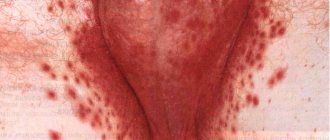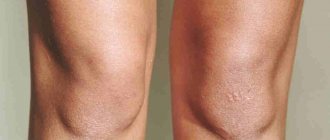Numbness is an abnormal sensation that can occur in any part of the body, but is most often felt in the arms and legs. The symptom of numbness is often accompanied by tingling, and can be quite harmless, for example, in the hands when cooling, to a sign of a serious, life-threatening condition. Numbness is a fairly common symptom. Numbness of the limbs is often accompanied by an emotional context with a feeling of detachment and decreased emotional coloring, which is usually a sign of depression. In a physical context, numbness is usually the result of damage, poor circulation, or pathological changes to certain nerves.
In addition, there may be periodic attacks of numbness and tingling due to the presence of certain health problems, such as neuroses or a migraine attack. Also, episodes of numbness can occur during attacks of fear caused by the anticipation of life-threatening events, and in such cases the numbness is caused by shallow breathing and most often affects the fingers and the mouth area.
Numbness of the hands is manifested by a feeling of loss of sensation in the hands; patients often call this condition “asleep” hands. Numbness may be accompanied by a tingling sensation from the needle. Often such numbness occurs after sleeping with your hands under your head. Numbness in the hands is usually caused by carpal tunnel syndrome, which causes compression of the median nerve. Most often, carpal tunnel syndrome is caused by compression of the nerve in the carpal tunnel. In addition, numbness in the hands can be caused by injuries, hypothermia, or systemic diseases such as diabetes. If numbness of the hands is accompanied by shortness of breath, nausea, and palpitations, then this may be a sign of acute, life-threatening conditions and requires emergency medical attention.
Numbness in the legs is a loss of feeling or sensation in the legs, resulting from disruption of communication between the peripheral nerves and the central nervous system. Typically, numbness in the legs is associated with poor circulation in the lower extremities. This numbness most often occurs when sitting cross-legged for a long period of time. In such cases, getting up and walking can relieve the numbness after a while. But numbness in the legs can also be a sign of serious damage to nerve fibers due to mechanical factors (disc herniation, radiculopathy) or nerve damage due to somatic diseases.
Causes
Numbness can be a sign of a wide range of diseases or conditions that involve restricted blood flow or nerve damage.
Temporary numbness can be caused by any activity that puts prolonged pressure on the nerve(s), such as sitting cross-legged or cycling long distances. Numbness can also occur due to moderate to severe orthopedic or vascular pathology, as well as conditions and diseases that lead to damage to the nervous system. In some cases, numbness is a symptom of a life-threatening condition that requires emergency medical attention.
Cardiovascular causes of numbness
Numbness can be caused by a lack of blood flow to a certain area due to conditions such as:
- Arteriovenous malformations
- Buerger's disease
- Deep vein thrombosis (a blood clot in the legs can break off, which can lead to pulmonary embolism in the lungs, heart attack, stroke)
- Frostbite
- Diseases of peripheral arteries (vascular atherosclerosis, in which narrowing of the arterial bed occurs).
- Raynaud's syndrome, in which persistent spasm of peripheral vessels occurs and blood circulation in the distal extremities is impaired. Vasospasm is usually triggered by cold or sometimes stress.
Orthopedic causes of numbness
Numbness may also occur due to minor or serious orthopedic conditions that cause nerve damage:
- Whiplash neck injury
- Bone fractures
- Carpal tunnel syndrome
- Degenerative diseases of the intervertebral disc
- Herniated disc
- Compression pinched nerve
- Osteoporosis
Neurological causes of numbness
Numbness due to nerve compression or nerve damage may be due to conditions such as:
- Alcoholism
- Brain tumors
- Diabetic neuropathy
- Encephalitis
- Heavy metal poisoning such as lead poisoning
- Hypothyroidism
- Multiple sclerosis
- Peripheral neuropathy
- Spinal cord injury or tumor
- Stroke
- Systemic lupus erythematosus
- Myelitis
- Myelopathy
- Vitamin B12 deficiency
Numbness during pregnancy
Pregnant women face many changes in the body, and numbness is one of them. Some pregnant women develop carpal tunnel syndrome and it is believed to be due to water retention in the body during pregnancy.
As the fetus develops, fluid accumulates in the body, tissues swell, including in the wrist area, compression of the median nerve occurs and carpal tunnel syndrome develops. Symptoms of carpal tunnel syndrome are more pronounced in the morning hours, as fluid accumulates in the body at night. As a rule, carpal tunnel syndrome in pregnant women heals on its own after delivery.
Numbness in children
There are many reasons why children may experience numbness in different parts of the body. Eating disorders, lack of vitamins and minerals can cause numbness in the lower extremities, this is especially typical for a deficiency of B vitamins. Sports injuries can also cause numbness. Therefore, in childhood, parents need to pay attention to children’s complaints of numbness, which lasts more than a few minutes and may be a sign of damage to ligaments, tendons or bone fractures. Often, anxiety in childhood can be a source of numbness in the lips and face.
How to help yourself with tingling joints
If the tingling sensations recur, listen to your body. You may also notice other unpleasant symptoms, such as morning stiffness. If the joints tingle only occasionally, complications can be prevented with the help of a special diet and vitamin therapy. Add these joint-healthy foods to your diet:
- Red fish and flax seeds. They are high in Omega-3, a substance that reduces inflammation and slows down the wear and tear of cartilage.
- Celery salad, juice or infusion. This product is a powerful antioxidant and is also used to remineralize and detoxify the body.
- Ginger. Regardless of the form, be it infusion, powder or spice, the product has a strong analgesic and anti-inflammatory effect.
- Nettle. It has cleansing properties, so nettle leaves can be rubbed on an affected or tingling joint, or you can add them to a salad.
“One nettle replaces seven doctors,” says popular wisdom. What are the benefits of this well-known plant for the body and joints?
None of the above folk remedies is a panacea for joint diseases. Sometimes tingling can develop into discomfort and constant aching pain, and an MRI will show arthrosis of the joints.
As a rule, in case of such complaints, the doctor orders an x-ray to rule out injury or prescribe effective treatment for osteoarthritis based on the results, and also recommends a detailed blood test. It will show the presence of inflammation in the body and help you draw the right conclusion.
Therefore, do not rush to write off this seemingly harmless symptom as an accident and be vigilant! Some diseases are very insidious and make themselves felt only in advanced stages.
Symptoms
Numbness usually occurs due to poor circulation in a particular area or nerve damage. Sensory disturbances (numbness) can also be the result of infection, inflammation, trauma and other pathological processes. In most cases, numbness is due to non-life-threatening illnesses, but it can also be a sign of a stroke or tumor.
Numbness in the extremities is often associated with pain or may be accompanied by other sensory disturbances such as burning or tingling. Strokes also cause motor and speech disorders. Depending on the cause, numbness may disappear quickly, for example, numbness in the arm , which occurs when a person sleeps with their head on their arm, disappears after a few movements of the arm. Chronic numbness in a leg or arm over a long period of time usually indicates some level of nerve damage, such as due to diabetes or multiple sclerosis. Chronic numbness in the fingers may be due to a pinched nerve, as is the case with carpal tunnel syndrome. In any case, numbness that lasts more than a few minutes merits attention and medical attention. And if a person experiences numbness in the groin area and impaired bladder and bowel function, or there are signs of paralysis, confusion, speech impairment, then in such cases it is necessary to seek emergency medical help.
Symptoms that may accompany numbness:
- Anxiety
- Burning feeling
- Frequent urination
- Increased numbness or tingling while walking
- Itching
- Lower back pain
- Muscle spasms
- Pain in the neck
- Pain in other parts of the body
- Pins and needles sensation
- Rash
- Increased sensitivity to touch
A number of symptoms accompanying numbness may be a sign of serious conditions and this must be taken into account by the doctor, since emergency medical care and necessary medical procedures are often required.
These are the following symptoms:
- Lethargy or momentary loss of consciousness
- Labored breathing
- Difficulty walking
- Dizziness
- Loss of control over voluntary urination or bowel movements
- Visual impairment
- Numbness in the head, neck, back
- Paralysis
- Speech disorders (dysarthria)
- Weakness
In what cases is tingling in the joints safe?
If tingling attacks are one-time in nature or occur extremely rarely, there are probably no dangerous pathologies hidden behind them. This happens, for example, if:
- carry heavy things in your hands;
- hold your arms in an unnatural position for a long time, for example, above your head;
- when there is a sudden change in weather and jumps in atmospheric pressure;
- you were sleeping or sitting in an uncomfortable position.
Due to poor circulation, the joint becomes slightly numb - the person feels a subjective tingling sensation, which quickly passes as soon as the blood supply returns to normal. Unfortunately, this is not always the case.
If you have tingling sensations in your joints, it would be a good idea to consult a neurologist.
Diagnosis and treatment
Based on the medical history, study of symptoms and physical examination, the doctor prescribes an examination plan, which includes both instrumental and laboratory examination methods.
To treat numbness, first of all, it is necessary to find out the cause of this symptom. If numbness is associated with circulatory disorders, diabetes or multiple sclerosis, the underlying disease is treated, both with the help of conservative treatment methods and surgical methods (for example, for vascular diseases). For orthopedic problems, such as disc herniation, osteochondrosis, treatment can also be either conservative or surgical (for example, when it is necessary to decompress the nerve root).
Brief description of the pathology
The feeling of many needles under the skin, goosebumps, numbness - this is how patients characterize their symptoms. Unpleasant sensations can occur both during exercise and at rest. These signs are characteristic manifestations of neurological or vascular diseases. Paresthesia
- a medical name that summarizes such manifestations.
An accompanying symptom is muscle weakness in the limbs.
Tingling may be felt in the fingers, palms, and feet.
Most often, these symptoms appear when the limbs are in one position for a long time:
- during sleep;
- when performing monotonous work that requires a fixed position of the limbs.
Symptoms may appear for a short time or be constant. Short-term symptoms are usually mild, and constant tingling causes significant discomfort. High intensity or regular short-term sensations are the basis for a comprehensive examination.
Forms of alcoholic polyneuropathy
They differ in the set of symptoms and clinical picture.
Sensory. It manifests itself as pain in the hands, feet (the latter is more common), numbness or burning, cramps, and a feeling of chilliness. The sensitivity of the palms to temperature or pain stimuli may become more acute or, conversely, reduced. Sensory disturbances may be segmental. They often occur together with noticeable vegetative-vascular disorders (sweating, marbling of the skin on the feet or palms, or a change in its shade to bluish). A number of reflexes may decrease.
Motor. Sensory disturbances in this form are mild, most often affecting the legs. The muscles are weakening. The tibial nerve is often affected, causing the flexion of the feet and toes to be impaired, a person may walk on their toes, and the extensors of the foot and toes do not work properly. In the area of the legs and feet, muscle atrophy may develop or increased muscle tone may appear. Without treatment, paresis (muscle weakness) intensifies to the point of paralysis, pain, numbness, and sensory disturbances may appear. The same symptoms can occur in the hands.
Ataxic. Coordination of movements and gait are impaired due to a decrease in deep sensitivity. A feeling of numbness appears in the legs, the feet and palms become numb, and reflexes are reduced.
Mixed. With this form of polyneuropathy, there are symptoms characteristic of the motor and sensory forms: pain, decreased sensitivity, weakness of the muscles of the arms and legs, changes (usually decreased) reflexes.
Alcoholic polyneuropathy can be asymptomatic (almost all patients with chronic alcoholism have it). In the chronic form, symptoms increase gradually over a year or more. In acute or subacute form, it develops over several weeks and is more pronounced.
Order alcoholism coding
Experienced doctors and narcologists. In hospital or at home. 24-hour service in Moscow and the region. Professional, anonymous, safe.
Numbness of the leg on the outside
This pathology has a special medical name - paresthesia, and is of a tumor, infectious, neurodegenerative or autoimmune nature. Accompanied by tingling, burning, and pain of varying intensity.
The sensations can be short-lived or long-lasting, of a paroxysmal nature. The most dangerous are long-term sensory disturbances, the cause of which is the course of chronic pathologies: arthritis, osteochondrosis, diabetes and others. Violations of cellular metabolism lead to persistent disruption of nerve impulse conduction.
How does the disease manifest?
Alcoholic polyneuropathy has a set of characteristic symptoms that gradually become more pronounced:
- the muscles of the arms and legs become weak. At first, mild weakness is felt in the palms and feet, and then spreads and becomes more noticeable;
- decrease in sensitivity, its gradual decrease until disappearance;
- decrease in the severity of reflexes up to their absence;
- pain syndrome. The pain may increase gradually or be immediate and severe. Usually pain is not associated with any “external” causes (injuries, stress);
- swelling of the legs, arms;
- the appearance of goosebumps, burning, and other sensations in the limbs;
- tremors, tics, muscle twitching, finger trembling;
- problems with the cardiovascular and respiratory systems (shortness of breath, breathing problems, rapid pulse, arrhythmia);
- sweating (appears unexpectedly and is not associated with exercise, body temperature or heat);
- impaired coordination of movements, dizziness, problems with balance.
Symptoms can increase sharply after severe alcohol intoxication or binge drinking; they often manifest themselves acutely after hypothermia. In other cases, they intensify gradually, against the background of a general deterioration in health due to chronic alcohol dependence. More often, the disease develops subacutely over several weeks or months: the sensitivity of the arms or legs is impaired, and the calf muscles become painful. When squeezed, the pain intensifies. Without treatment, muscle weakness appears - up to paralysis and atrophy.
Order alcoholism treatment
We work around the clock, experienced doctors, 100% anonymous.
Complications and consequences of numbness in the legs
The consequences of numbness in the legs are very diverse, leading to a wide range of complications. They depend on the cause that led to the malaise. The main thing that the patient needs to understand is that the presence of frequent numbness is not the norm, this is a very dangerous symptom that requires immediate consultation with a doctor. Timely examination will help protect against serious consequences.
Complications preceded by numbness of the legs:
- loss of tissue sensitivity, partial or complete;
- loss of limb mobility;
- dysfunction of the pelvic organs;
- leg deformity;
- gangrene;
- necrotization of intervertebral hernia.
Numbness of the leg below the knee
This part of the limb is extremely vulnerable to disorders of the blood vessels and nerve roots. A passive lifestyle and sedentary work can cause pathology. Vascular problems additionally give a burning sensation, loss of sensitivity, cold feet, tingling of the numb area.
Numbness of the right leg is one of the most important signals of sciatic nerve neuropathy, the cause of which is a hernial formation. The symptom intensifies when walking or sitting, and is often accompanied by convulsions.
The same pathologies on the left leg indicate left-sided protrusion of the intervertebral disc. Accompanied by piercing, unexpected pain.











